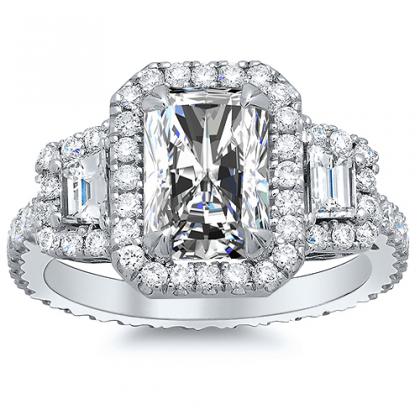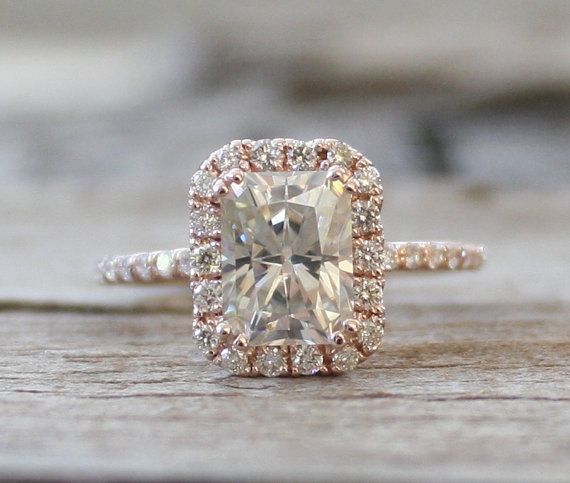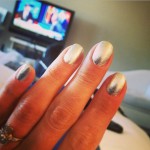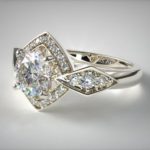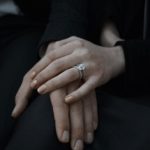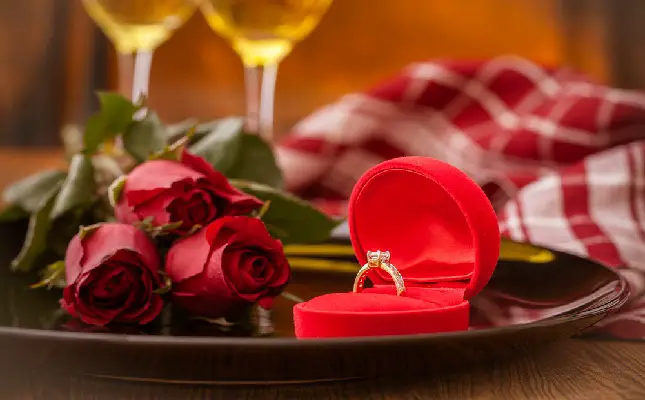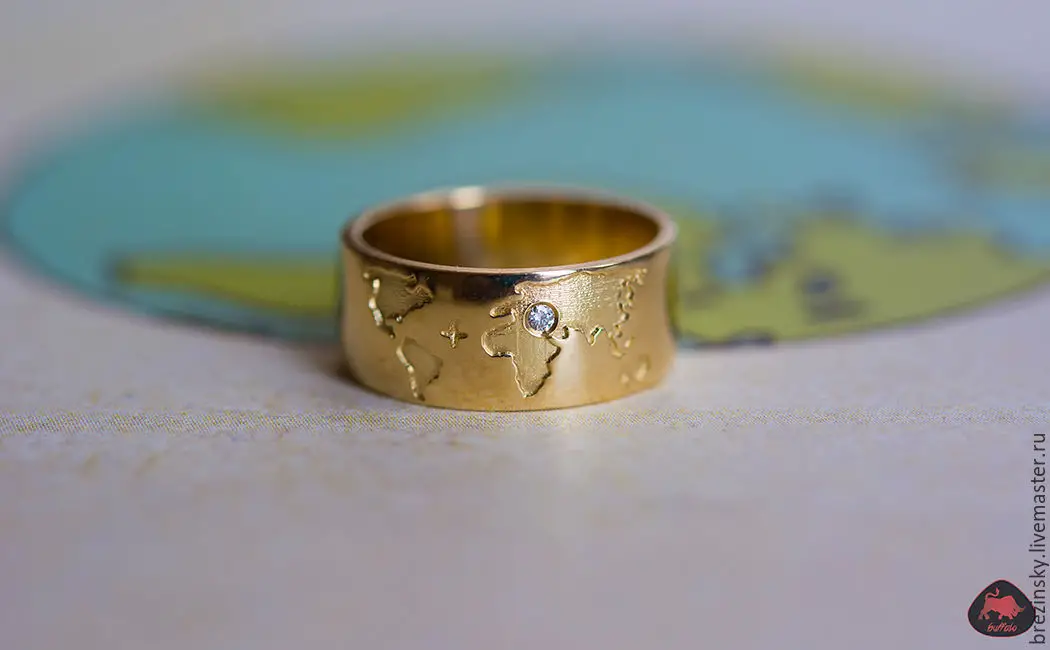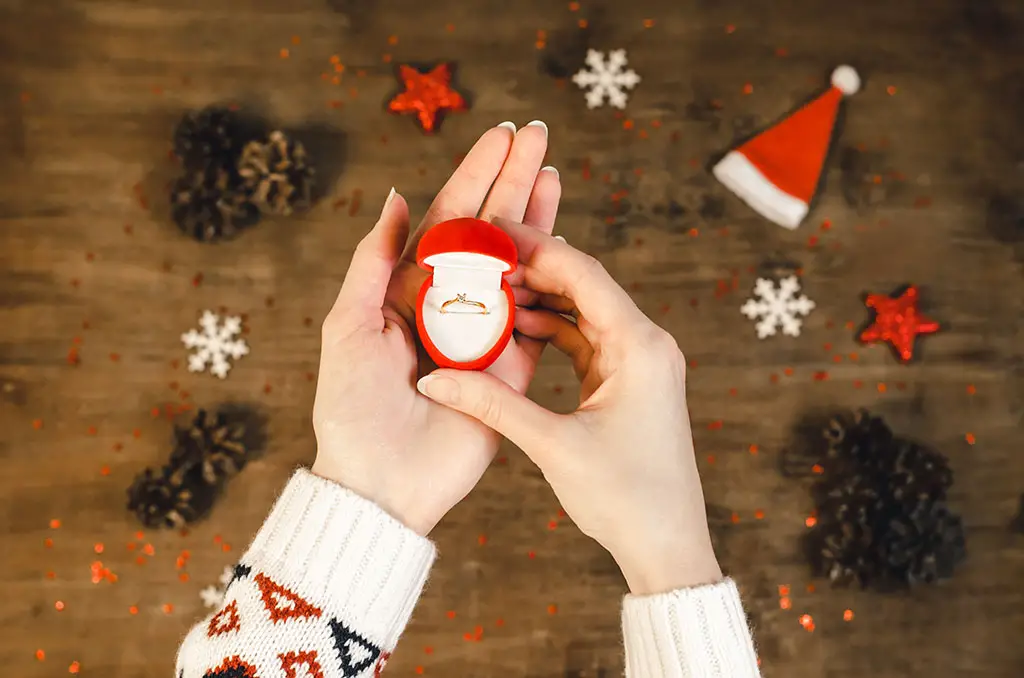Your diamond’s shape is one of the most important style elements of your engagement ring. It can say a lot about you; round diamonds tend to be the classic, traditional choice, princess cuts are a little more contemporary, and so on. But your gemstone’s shape can have an effect on many other aspects of your engagement ring too, like price, its ‘sparkle factor’, and overall design decisions. So we’ve decided to tell you everything you need to know about certain not so obvious diamond cuts. Starting with the ever so beautiful radiant cut diamond…
What is a Radiant Diamond?
A radiant cut diamond is a square or rectangular shaped stone with cut corners and eight (non-equidistant) sides. It was first patented in the 1970s by Henry Grossbard, and has enjoyed rising popularity ever since. The radiant cut mixes two cutting styles; the step cut on the crown (typical of emerald cut stones) and a brilliant cut pavilion. Essentially, it has the strong outline of an emerald diamond with the exemplary sparkle of a round brilliant diamond. Unlike an emerald cut however, you don’t need a near flawless stone to make a worthy radiant diamond.
Radiant stones have been 53 and 70 facets, meaning they rate highly on what we like to call the ‘sparkle scale’. According to the experts, the perfect radiant cut has a table that takes up a minimum of 61% of the stone’s width. The depth should be 61% or more of its width, and the culet should be pointed, not clipped or faceted. This applies to both square or rectangular radiant shapes. The ideal length to width ratio (depending on who you ask) is 1 to 1.05 for square radiants and 1 to 1.15 or higher for rectangular radiants.
Radiant Cut Pros and Cons
Radiant diamonds offer many advantages. The high number of facets not only makes them extra sparkly; it also means that minor flaws and inclusions can go unnoticed by all but expert jewellers with specialist equipment. In other words, radiant cuts can appear to have better clarity than other stones, even when they don’t.
Because they don’t have the sharp, precarious corners that princess cuts do, radiant diamonds are a more durable choice that can take minor knocks and bumps easily. A good choice for active brides or those who work with their hands a lot.
There are no rules for the width and length of radiant stones – which means you’ll find a hell of a lot of variation in shapes and sizes. Finding a good quality radiant diamond is definitely possible, but challenging if you’re new to this kind of thing. You’ll probably need to enlist the help of an expert.
Radiant stones tend to have quite a large depth, which means they’ll sit high on your finger. While this means it’ll catch the light better, it also makes it liable to snag on fabrics and the like. Not a deal breaker by any means, but something to beware of.
Radiant Engagement Ring Design Tips
This distinctive cut is tailor made to be solitaire engagement ring if you ask us, but there are many ways to jazz up the design if you so wish. Dainty halo settings can add a touch of extra sparkle, as can side stones – especially coloured ones in an equally unusual shape, like the triangular trillion shape. Three stone radiant engagement rings, with a larger centre stone and smaller accent stones, happen to be personal favourites of ours.
Prong settings are recommended over bezel settings for this cut. Why shouldn’t you make the most of all those brilliance-inducing facets? Prongs let the most amount of light into the stone, while bezel settings block the lower half of the stone from receiving any light whatsoever.
What Else Do You Need to Know?
- Like trillion cuts, symmetry is key. Look for a centred culet and parallel sides.
- Radiant cuts often accentuate or intensify a stone’s face up colour. Some diamonds that started out life as a dull yellow in a round shape have been upgraded to fancy colour diamonds when recut in the radiant shape.
- Good news! Radiant diamonds are one of the cheapest shapes on the market in terms of per-carat cost. You still have to factor in the remaining 3Cs however (colour, clarity, cut).
- Because radiant stones hide inclusions and tend to accentuate colour as a given, cut and carat weight should be your focus. It should also make larger carat sizes more affordable for those on a budget – yay!
- It’s always worth examining radiant stones loose to check on their proportions. If possible, buy your radiant diamond loose and then have it set in your desired style.
- In oblong, rectangular radiant cuts, bow tie shadows sometimes occur. Inspect your stone closely; if you can’t see it, then it’s fine.
